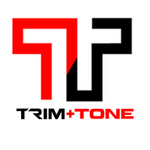What is Red Light Therapy?: From Origins to Fat Burning and Healing

In recent years, red light therapy has gained significant attention for its potential health benefits, ranging from skin rejuvenation to pain relief. But what exactly is red light therapy, and how has it evolved into a technology that can aid in burning fat and promoting healing? Let's delve into the origins of red light therapy and its remarkable journey to becoming a versatile tool for wellness.
Origins of Red Light Therapy
The roots of red light therapy can be traced back to ancient civilizations, where sunlight was revered for its healing properties. Ancient Egyptians, Greeks, and Romans all recognized the therapeutic effects of sunlight on various health conditions. Fast forward to the late 19th century, and scientists began to study the effects of light on biological systems more systematically.
One key milestone in the development of red light therapy was the discovery of photobiomodulation (PBM) in the 1960s. PBM, also known as low-level laser therapy (LLLT) or cold laser therapy, involves the use of low-intensity light to stimulate cellular activity and promote healing. This discovery laid the foundation for the modern applications of red light therapy.
Evolution into Fat Burning and Healing
Over the decades, research into red light therapy has expanded, revealing its potential to address a wide range of health concerns. One area where red light therapy has shown promise is in fat burning and weight management. Studies have suggested that exposure to red and near-infrared light can stimulate the mitochondria in fat cells, leading to increased energy production and the breakdown of stored fat.
Furthermore, red light therapy has been found to improve circulation and reduce inflammation, both of which are important factors in supporting the body's natural healing processes. This has led to its use in accelerating wound healing, reducing pain and inflammation associated with injuries, and even promoting hair growth.
How Red Light Therapy Works
Red light therapy works by delivering specific wavelengths of light, typically in the red and near-infrared spectrum, to targeted areas of the body. These wavelengths penetrate the skin and are absorbed by mitochondria, the powerhouse of the cell. This stimulates cellular energy production, leading to various physiological effects such as increased collagen production, enhanced blood flow, and reduced inflammation.




